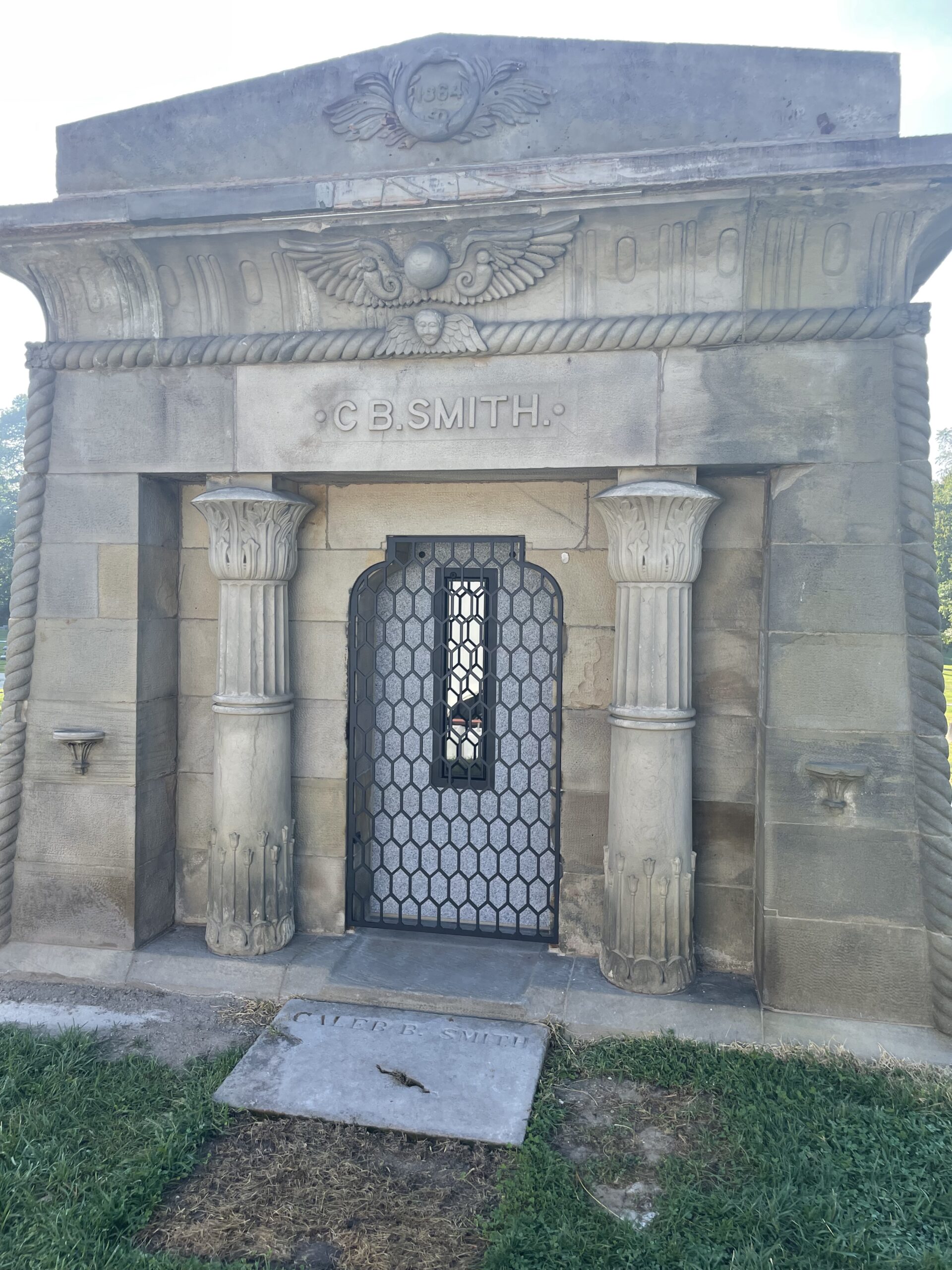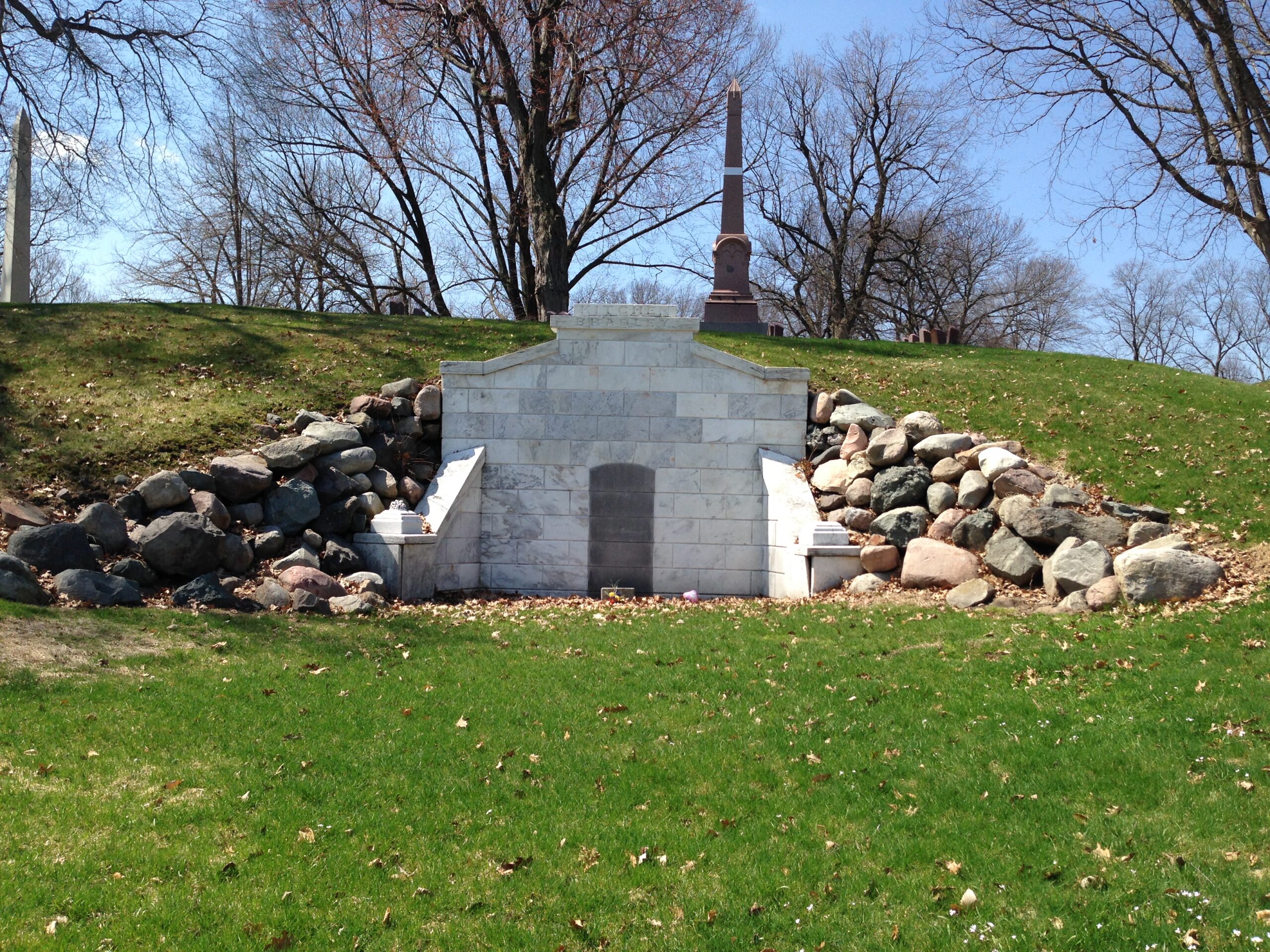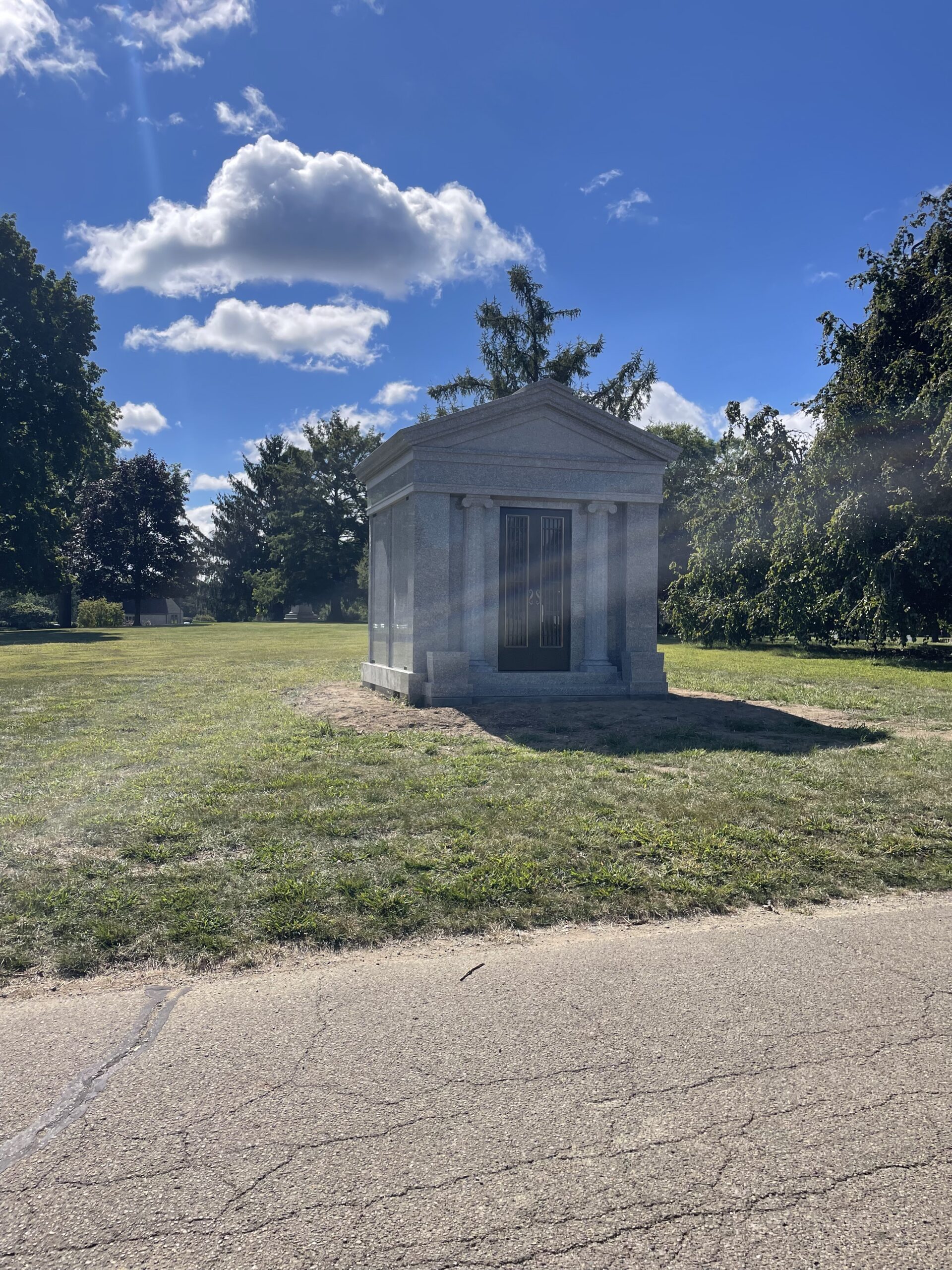Family Mausoleums

Beginning with the construction of the Caleb Blood Smith family mausoleum in 1864, 90 of these beautiful structures have been erected at Crown Hill. The most recent one was just completed in September 2024. Private family mausoleums contain crypts or niches. Many are ornate, both inside and out, with bronze doors, statuary and stained glass windows.

Restored in 2020 (exterior) and 2022 (interior), the C. B. (Caleb Blood) Smith Mausoleum, constructed in 1864, was the first family mausoleum built at Crown Hill Cemetery. The sandstone mausoleum featuring Egyptian symbolism is in stark contrast to the above ground crypts built today of granite, which often feature little or no iconography.
Over the decades, the architectural style of mausoleums reflects not only trends in architecture, but also family preferences. Those mausoleums built in the late 1800s and early 1900s are constructed primarily of rough-faced granite in popular styles like Richardsonian Romanesque, Art Nouveau, or Greek Revival. By the 1930s-1950s, many of the new mausoleums were built of polished granite in the art deco style, so popular at that time. Records for most of the mausoleums do not list an architect, builder, or company.

While not a high-architectural style mausoleum, probably the most unique is the Kitchen Mausoleum. Built into the side of the hill in 1866, the structure was sealed in the 1960s; no known photos exist of the interior, so we can only imagine the crypt fronts and layout.
Who gets interred in a family mausoleum? Well, the family decides. Most often, it is immediate family members, but sometimes others are included in the site. The most famous case is in the Fisher Family Mausoleum. Alongside Carl, his child, brother, and parents lies Captain Joseph Hammond, a New Zealand British Royal flying corps pilot, who was killed in a crash near the motor speedway. Fisher offered his family mausoleum for temporary storage until the family could retrieve Hammond; he remains in the mausoleum today.
Since 2021, the Foundation has had an ongoing project to restore the historic mausoleums. The upkeep of these usually falls to the cemetery, as most of the family is either interred in the structure or are no longer living in the area. The Foundation raises funds to conduct the work by preservation specialists as most of the structures were constructed before the concept of endowments. See some of the preservation work here.

